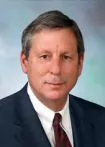At a conference sponsored by the U.S. Treasury Department, Board of Governors of the Federal Reserve System, Federal Reserve Bank of New York, SEC and CFTC, senior regulators examined developments in the U.S. Treasury Market. Participants discussed data reporting, clearing and settlement, and the ongoing evolution of Treasury Market structure and liquidity.
Board of Governors of the Federal Reserve System Governor Jerome H. Powell urged industry members to "play an important role in shaping the evolution of the settlement infrastructure." He reported that the Board discussed a settlement utility, and that the Depository Trust and Clearing Corporation "is currently considering a new variant of such a model."
SEC Chair Mary Jo White stated that SEC equity market regulation "can and should be deployed to strengthen the U.S. Treasury Market." She explained that the SEC focuses on "three critical areas of regulatory convergence: enhancing oversight and reporting of trading and trading platform operations; strengthening the foundational regulatory regime for these platforms and the broker-dealers that trade in the U.S. Treasury market; and working closely with FINRA as it considers and reconsiders the application of its rules to the government securities markets."
CFTC Chair Timothy M. Massad described the "analytical tools" used by the CFTC to address the October 15, 2014 "flash crash," which he compared to the "October 6, 2016 British Pound Event." Chair Massad stated that the CFTC currently is considering a supplemental proposal on Regulation Automated Trading ("Reg. AT"). He expressed his general willingness to support the "two-tier structure" of the risk controls as proposed originally, which would require "risk controls at the exchange level," and at either the trader or futures commission merchant ("FCM") level. Chair Massad added that a "trading firm could have its own controls or opt in to the FCM controls." In addition, he asserted that Regulation AT should base the registration requirement on "the most active firms," as determined by a "volumetric test."
New York Federal Reserve Bank President and CEO William C. Dudley emphasized the necessity of "continued engagement between a wide array of market participants and official agencies." He maintained that "[d]ata are essential to understanding flash events and market liquidity." In addition, Mr. Dudley outlined common attributes shared by the U.S. Treasury and foreign exchange markets.
Counselor to the Secretary of the U.S. Treasury Department ("Treasury") Antonio Weiss maintained that the Treasury strongly supports the registration of all principal trading firms that are active in Treasury markets. Mr. Weiss referenced the CFTC (through Reg. AT) and SEC efforts in this regard. Mr. Weiss also expressed support for the registration of electronic trading platforms as alternative trading systems under the SEC's purview, as well as for a public post-trade reporting regime with appropriate safeguards to prevent against liquidity disruptions (including possible notional caps/buckets, time delays and a phase-in).
Delta Strategy Group prepared a summary of the Conference.
Commentary / Bob Zwirb
In the post-crisis aftermath, regulators have placed a great deal of stock in funneling transactions into a central clearinghouse in order to enhance regulators' ability to observe and analyze all such transactions. Notwithstanding such enhancements, which allow regulators to see, in Chair Massad's words, "[a]ll messages – orders, cancelations, modifications – [that] come to the centralized order book," sudden price movements that lack "any apparent catalyst," and that often are attributed to computerized and high-frequency trading, have always been with us. The 1962 stock market flash crash, which occurred at a time when modern technological trading systems had yet to be created, illustrates that fact.
The content of this article is intended to provide a general guide to the subject matter. Specialist advice should be sought about your specific circumstances.

